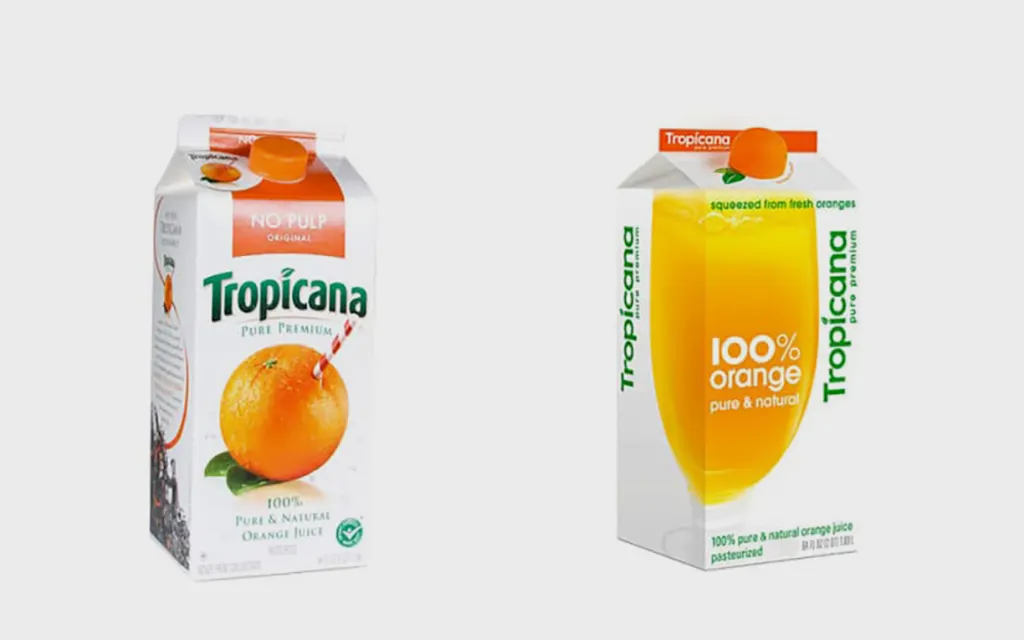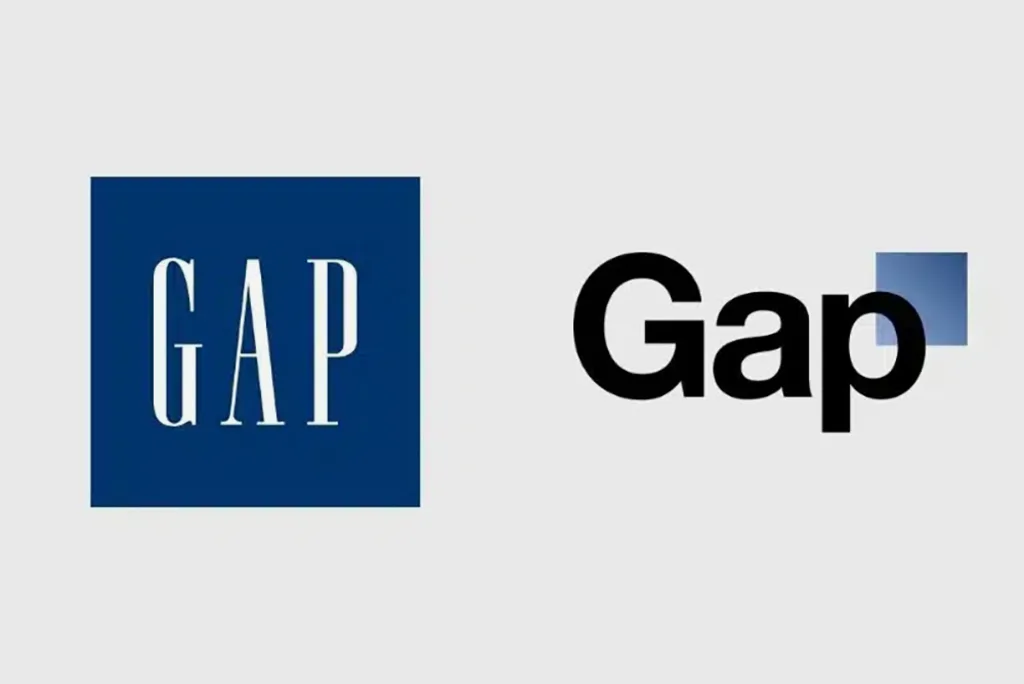- | 8:00 am
The rebrand is dead. Welcome to the age of the brand ‘refresh’
There’s a reason brands don’t want to rebrand anymore.

As someone who writes about design and branding, my inbox pops and pings 24/7 with emails from PR reps, agencies, studios, and corporate behemoths bearing news of fresh projects and products. It’s all usually straightforward enough. But over the past few months, my inbox began to tiptoe toward The Twilight Zone.
Seemingly all at once, PR reps and media coordinators began dubbing every rebrand a “refresh”—even when it was a complete and utter visual overhaul. (One even noted that if we were to write about the project, it must be labeled as a refresh versus a rebrand.)
Was this simply a case of mistaken identity terminology—or was something else afoot? “You’re not hallucinating,” Cait Starke, Pearlfisher’s head of strategy, reassured me with a laugh. “It’s real.”

REBRANDING ‘REBRAND’
It all started a few years ago, says Alex Center, founder of the design studio Center. Rebrands, once the domain of navel gazing design industry news, started to make global headlines like never before. In many ways, rebrands became a new form of marketing. Naturally, people seized on and abused the phenomenon, and suddenly any minor tweak, like a brand color or typeface, became a “rebrand” in a press release.
New industry terminology was needed—and “refresh” was it.
There’s a technical difference between a refresh and a rebrand says Grace Dawson, Center’s president. “A refresh implies a spruce, a blowing off of dust, an addition of some needed elements for a new channel entry,” she explains. “It may include core elements that have been lightly refined or some core elements that have remained untouched with some new parts added or adjusted. Whereas a rebrand goes to the core, the structural aspects of the brand and redefining it, a gut renovation as opposed to a lick of paint and some new furniture.”
From a consumer perspective, true recent rebrands—think Reddit on one end of the spectrum, and Twitter’s bizarre, uncoordinated transition to “X” on the other—feel fewer and further between. Seemingly even sparser are rebrands actually being dubbed “rebrands.”
So why is “refresh” the term that is now being abused?
As someone who hates change, I can confidently tell you that people hate change. And so could Tropicana or Gap, whose utterly disastrous rebrands are now the stuff of design school case study legend. They continue to loom large over the industry, and it logically tracks that if you’re going to mess with a beloved brand, dubbing it a refresh is the safer play.
Starke wonders aloud if we have rebrand exhaustion—and culturally, if we’re being driven to things that feel more familiar right now.
Indeed, since the pandemic and everything else the past few years have wrought, we’ve sought safety and the familiar in so many areas of our lives—including design, with the ’90s aesthetics of our youth dominating and throwback vibes around every corner. It’s not a leap to assume the quest for solace has left us turning our backs on the notion of redesigns for the comforts of a refresh, especially in an era of (quasi-terrifying) AI and perpetually emerging tech.
Either way, there’s a place where the terms get even more muddled: the inside of agencies and brand studios. “Rebrand” is a word packed with baggage—not least of which is significant dollar signs, especially over a more minor “refresh.”
Rick Barrack, chief creative officer and founding partner of CBX, says it’s critical to remember that creative teams have to navigate their own internal audiences to sell an initiative.
“Particularly when you’re dealing with big category leadership brands, it’s easier to … get buy-in with a refresh than it is a rebrand,” he says.
He adds that sometimes an initiative is sold as a refresh … but it turns into a rebrand (while likely simultaneously being dubbed a refresh). Other times, a client who signed up for a rebrand gets spooked, and the work gets spun as a “refresh” when, in actuality, it’s… a rebrand. And that’s all without getting into the politics of the client’s own internal team and their emotions around the two terms.
Still, all that fear is founded, as the aforementioned orange juice apocalypse proved. “Refresh,” “rebrand”—call it what you will, but the difference between a true rebrand and a true refresh is not mere semantics, but something that can have stark real-world business consequences. Consider that Tropicana famously spent $35 million on the campaign around its rebrand in 2009, only for it to cost the company $30 million in sales in just two months.

THE DELICATE ART OF REVITALIZATION
At Center, the team is well-aware of the sensitivities around such projects. When presenting work for clients, they utilize a “walk/run/jog” model that offers three directions—what would be more in line with a refresh, something a bit further afield, and then something more akin to left field.
“That way, we’re kind of calibrating for people’s appetite for change,” Center says.
Which do clients tend to go for? He says that if he had to guess, he’d say the jog. And on the whole, the teams at Center and CBX agree that they’re seeing more refreshes in the marketplace right now.
“I think it’s a way of saying, We haven’t changed—we’re still the thing you know and love, we just look a little better. And who doesn’t want that?” Center says. “Everybody wants to be the new and improved. There’s so much out there competing.”
At Pearlfisher, Associate Creative Director Drew Stocker says cultural categories like museums are more likely to fully rebrand right now, but refreshes are definitely the norm in the CPG space at the moment. And they’re not without challenge.
“It’s very much a common theme that becomes a huge tension point of, how do you balance showing up in a new way that is unexpected and fresh and can draw in a new consumer group, but at the same time, not alienate that base that the brand depends on? Stocker says. “I do think it is very much rooted in that fear of polarizing what’s already there.”
When it comes to “refreshes” and “rebrands,” he doesn’t like either term. Rather, he prefers revitalization, which strikes at the essence of the mission to reignite a consumer’s existing love for a product, while generating intrigue and excitement in an authentic way.
Ultimately, while we wait for the branding world to catch up, we’re (sadly) stuck with our pair of muddled terms for now. Which leaves us wondering: Which is better in actual application: a rebrand or a refresh?
Perhaps neither. Or rather, both at once, working in chorus.
CBX Managing Partner Gregg Lipman says the best organizations he has worked with have a vision: They recognize where the brand is today, and can see the long view of where they want it to go. They know that a sudden overhaul to reach that end goal will give consumers whiplash, so they lean into the strategic art of the refresh until they achieve it.
“If we do our job, well, we should be able to refresh it and refresh it and refresh it until we get to that point where, if I took you back 10 years and showed you what was in the future, you would go, Wow, that was a rebrand,” he says. “Have one foot planted in today, pragmatically—and then have one foot moving towards the future.”
The only problem: What are we going to call it?








































